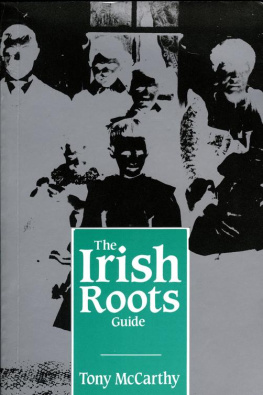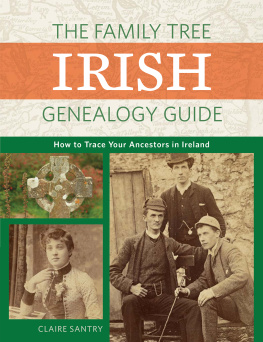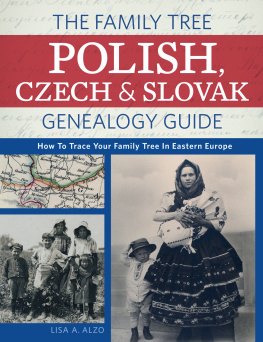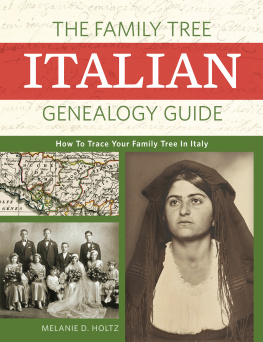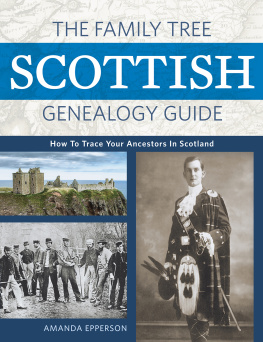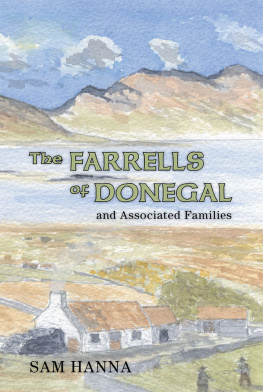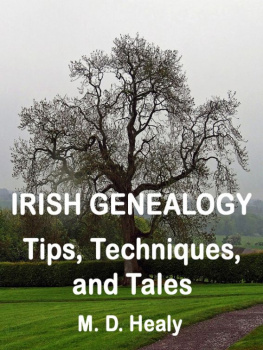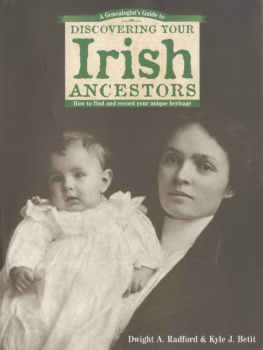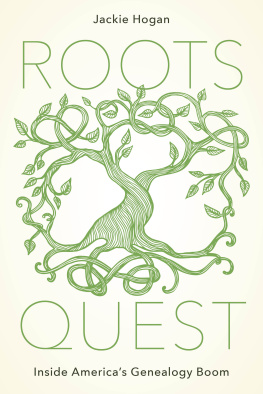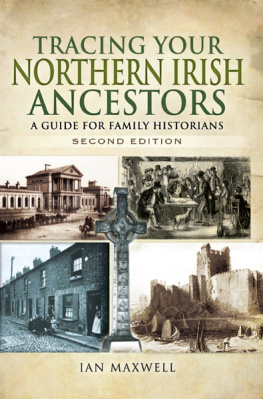The search for family roots is no longer the exclusive activity of North Americans and Australians interested in their Irish forebears . At home, more and more Irish people are anxious to trace their ancestry.
Today, amateur genealogists are facilitated by the availability of well-organized records but they are also frustrated by a lack of any clear idea of where to begin their investigation, and how to continue their labour of love.
Such people the great majority of family researchers will find Tony McCarthys book an invaluable guide. Indeed, the author can fully stand over his claim that his work is the most complete guide available to the twelve best sources of genealogical information.
He suggests a novel approach to doing the family tree, reminding us to cherish all our ancestors equally, not just in the male mainline. His very readable book combines learning and usefulness with common sense and humour, as he gently warns us of frequent errors and pitfalls.
Finally, it is worth noting that the work has the seal of academic approval. For his independent research, the author has been awarded an honours MA degree by the National University of Ireland.
JOHN A. MURPHY
EmeritusProfessorofIrishHistory
UniversityCollegeCork
About ten years ago I started to research the history of my own family. As soon as I began to accumulate information, I found it necessary to clarify my objectives because I felt dissatisfied with the family tree that I found myself constructing. I had begun by concentrating exclusively on the male line; my purpose being to trace it back as far as possible. This is the traditional procedure, employed in the most readily available guidebooks. Popular literature on the subject also encourages the reader to equip himself with a historyofhissurname and the family coatofarms.
I am unhappy with this procedure for many reasons. It consigns the greater part of ones ancestry to oblivion, while attaching exaggerated importance to those who bore ones surname . The notion that a surname is but a means of identification , a tag or label, would be strongly contested by some, but it would be foolish to maintain that its significance is on a par with the most important thing conveyed to us by our ancestors life. In this respect it is undeniable that the role of each one of our ancestors was crucial and equal.
MALE LINE
How then has what might be termed mainline genealogy triumphed over invincible biological fact? A widespread misunderstanding of Burkes and Debretts publications is, I suspect, one of the main reasons. BurkesPeerage,BurkesLandedGentry and similar genealogical works very deliberately concentrate on the male line, to the extent of listing children, not strictly in order of birth, but boys first, followed by girls. In the introduction to BurkesIrishFamilyRecords, the reason given for this procedure is primogeniture, the right of succession belonging to the first-born male, or to the eldest surviving male. The principal purpose of Burkes and similar family trees is not, as is widely believed, to give a comprehensive account of the ancestry of those listed. It is to illustrate how title and property descended through various generations. A family tree of this type is like a map showing the route taken by title and property from times past to the present. It is quite legitimate and understandable for anybody who has inherited property, be it ever so humble, to wish to trace the inheritance back through the generations; and as all property descends in the same way, he will find himself concentrating on his male line. However, I suspect that most people who trace their family trees are, like myself, descended from the non-propertied majority. In that case to concentrate on the male line is to follow uncritically Burkes and Debretts model.
The domination of the male line over the female line in genealogy is consistent with male domination, up to recent times at least, in almost all spheres. Once, women were virtually regarded as mere incubators, within whom the male seed grew to viable proportions. Science has shown that men and women are equal partners in the process of procreation. Children in secondary school learn in biology class that chromosomes are the genetic building-blocks; that 23 chromosomes are provided by the male sperm and an equal number by the female ovum. However, genealogy, by its insistence on the exclusive importance of the male line, still proceeds according to the primitive perception of women. It must only be a matter of time before this gross example of male chauvinism is swept away by liberated women tracing their foremothers. Indeed, it has become fashionable for women to retain their own surnames after marriage and even to impose double-barrelled names on their offspring. Should this tendency persist over a number of generations, a surname could become a veritable genealogical table.
SURNAME
Quite often, little may be unearthed about individuals who lived in past centuries, apart from Christian name, surname and the townland in which they lived. A common surname helps people to identify with their ancestors. This is another reason why family historians have tended to deal with the main line only. People dont feel comfortable with a list of ancestors whose surnames differ from their own. They are like strangers.
Studying the history of ones surname leads to a stronger identification, an emotional bonding with it. One begins to regard oneself as a Sullivan or a Kelly. A feeling akin to nationalism develops. The notion of belonging to a particular clan or sept is popular in Ireland and even more popular in the United States. Such notions do not stand up to analysis, however. Our parents have two surnames, our grandparents four. Stretching back another generation, our great-grandparents have eight surnames. If social convention did not eliminate seven of these, the clan fantasy would not exist. One cannot belong simultaneously to eight clans.
COAT OF ARMS
Buying the coat of arms associated with ones surname completes the process of identification with a small segment of ones ancestry. Such a purchase is doubly foolish. First, it shuts out from ones consideration the vast majority of those to whom one owes ones existence. Second, the belief that every surname has its corresponding coat of arms is incorrect. Commercial interests have sought to increase their market by promoting the idea that, just as every birthday has its star sign, every surname has its coat of arms. This is not true. Coats of arms belong to particular families and not to all those who bear a common surname. They may be seen in the same way as hereditary titles. If your name happens to be Gerald Grosvenor, it does not mean that you may call yourself the Duke of Westminster. Only the families to whom the hereditary title or coat of arms belong may use them. One authoritative writer on heraldry makes the point that those who purport to sell representations of a persons arms, simply on the evidence of his surname, may be open to legal action by the purchaser, since the vendor is describing his wares incorrectly and making money by false pretences.

